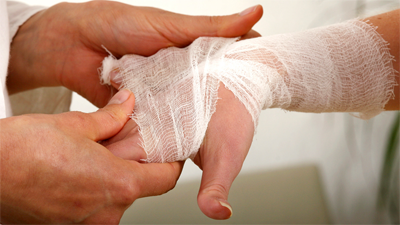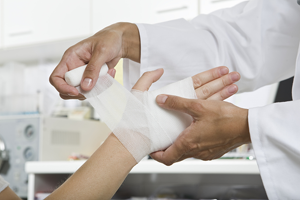
How Burns are Treated
Posted by Editor on Apr 24th, 2018 in Secure in Health | 0 commentsBurns don’t just happen when your skin comes into contact with an open fire, it can also occur when your skin is exposed to heat from radiation, electricity, and corrosive chemicals. So, how are burns treated and complications prevented?
Classification of Burns
Before a treatment is recommended, the doctor will assess the severity of the damage to the tissues first. The burns are classified into four categories so that prevention of infection and complications are more effective.

1. First-Degree Burns
Only the skin’s outer layer or the epidermis is affected, causing slight pain, dryness and redness. The pain should last for a maximum of 72 hours and can be treated with cold compress, ointment or lotion, and ibuprofen or acetaminophen.
2. Second-Degree Burns
This kind of burn affects not just the epidermis but the second layer or dermis as well. There is pain, swelling, redness, dryness, thickening of the skin and blisters on the skin. In some cases, second-degree burns become third-degree burns in a few days. These burns must be cleaned and bandaged at the hospital to avoid infection and will usually take three weeks to heal. The person will also need acetaminophen or ibuprofen for the pain and apply antibiotic creams on the blisters. If the blisters don’t heal, skin grafting is sometimes recommended.

3. Third-Degree Burns
Third-degree burns generally affect the epidermis, dermis, and even the muscles, tendons and bones of the affected person. The nerve endings on the burnt areas are usually destroyed, so the person does not feel any pain. The burn will look leathery, dry, swollen, and appear white, brown, yellow or black in color. This severe burn should be cleaned and debrided in the hospital, applied with antibiotic creams or ointments, and then the patient is given IV fluids with electrolytes and antibiotics to prevent infection. The patient is also given pain medications, supplements, a tetanus shot, skin grafting or cosmetic reconstruction.
4. Fourth-Degree Burns
The most severe burns affect the epidermis, dermis, subcutaneous fat, muscles, and bones. Like third-degree burns, the nerve endings are also destroyed so there isn’t much pain. The burns have to be closed using grafting and reconstructive surgery. In some cases, amputation might be required. The healing and recovery will take longer and the person might suffer from permanent disability.

Signs of Infection
Burn victims will have to watch out for dehydration and infection. It is especially difficult to tell if the affected area is already infected because of its appearance, so you should look for the following symptoms during the healing process:
1. Fever
2. Pus or green-colored discharges
3. Discoloration and swelling
4. Changes in color of the surrounding skin or burnt area
5. Changes in the thickness of the burn
